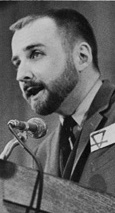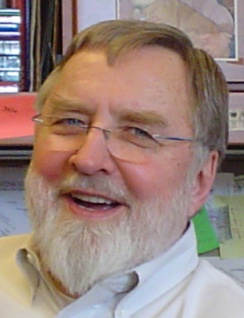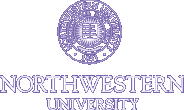JAMES J. REISA
Then:
Chairman and Co-Founder of Northwestern Students for a Better Environment; Ph.D student in ecology and biological sciences, researching environmental toxicology.

Now:
Dr. Jim Reisa is the Director of Environmental Studies and Toxicology at the U.S. National Research Council, the principal operating arm of the National Academy of Sciences and the National Academy of Engineering. Dr. Reisa served in senior positions at the Environmental Protection Agency in the toxics and research programs. He has served the White House Council on Environmental Quality during the Nixon, Ford and Carter administrations, helping to shape national environmental standards. in 2001 Dr. Reisa received the Distinguished Service Award of the National Academy of Sciences.

How did the idea for Project Survival come about?
"I was in biological sciences, working in the lab, and this kid comes up and says, ‘Have you been reading all these reports about pollution?' I said, well, yes....and he says, ‘So, what are you going to do about it?'" That encounter between Jim Reisa, graduate student, and Casey Jason, undergrad pre-med student, was the spark that created Northwestern Students for a Better Environment. "We just wanted to get the facts out there - Casey was the motivator."
"We (NSBE) were in touch with the Earth Day promoters - Gaylord Nelson (Democratic Senator from Wisconsin) and John Turner at University of Michigan. John was my counterpart at University of Michigan; the leader of their campus environmental group. We wanted to set a good example, thought these events might get positive press, we wanted to go after the facts and get large numbers of people involved. We decided that NU would go first and Michigan would go second. Michigan came up with the theta symbol, similar to the earth sign from astronomers, and we came up with the inverted triangle, the earth sign of alchemists. (Michigan won that one for the National Earth Day symbol)."
Jim was instrumental in helping determine the list of speakers, and persuading them to come to Northwestern. NSBE worked with fund supplied by several departments at Tech and CAS, faculty donated their seminar funds, and some speakers came at a reduced rate because this was a student run event. But Jim pledged his car as collateral to help get one of the bigger names on the program.
At the Project Survival event, Jim was the introductory speaker, outlining the purpose of the evening, and impressing on attendees the importance of the issues that prompted this night: "The first evolutionary requirement of a biological species is survival... Only the informed public can make the decisions and demand the actions that are so critically needed right now... It's about time we begin acting as an intelligent species - we've certainly tried every other approach."
What effect did the actions of those of you who founded NSBE and Project Survival have on the environmental movement?
"Northwestern University led the nation with the first major environmental event, leading up to the first Earth Day in 1970. Our student group at Northwestern turned a lot of heads when ten thousand people attended the Project Survival teach-out. But we did much more than that. At a time when student activism was mostly seen to be about anger and civil disobedience because of the Viet Nam war, we demonstrated that student activism could also be about investigating and spreading the facts, because we judged that facts, not emotions, were going to become the most important ammunition in the coming battles over environmental protection. The environmental problems of today might cause some to wonder what has been accomplished over the past four decades of effort. The answer is that these problems would have become much, much worse without those efforts. The battles continue, and will continue for the foreseeable future. Northwestern University and its students have a tradition to uphold in leading those battles."
